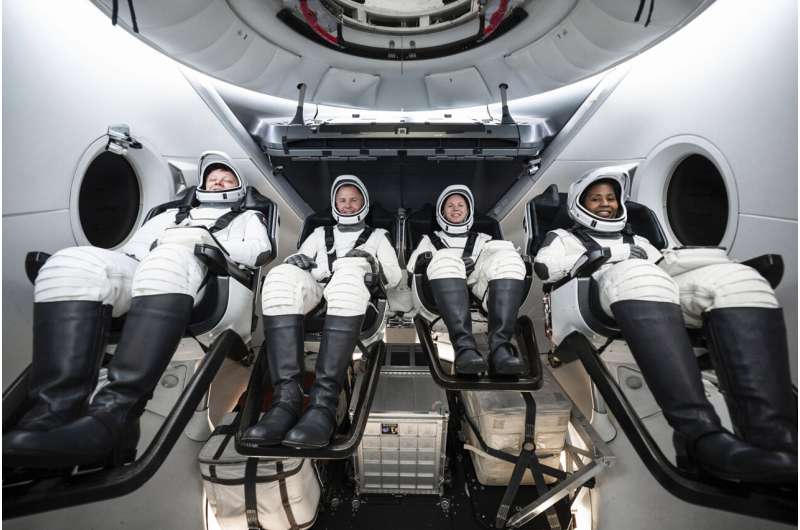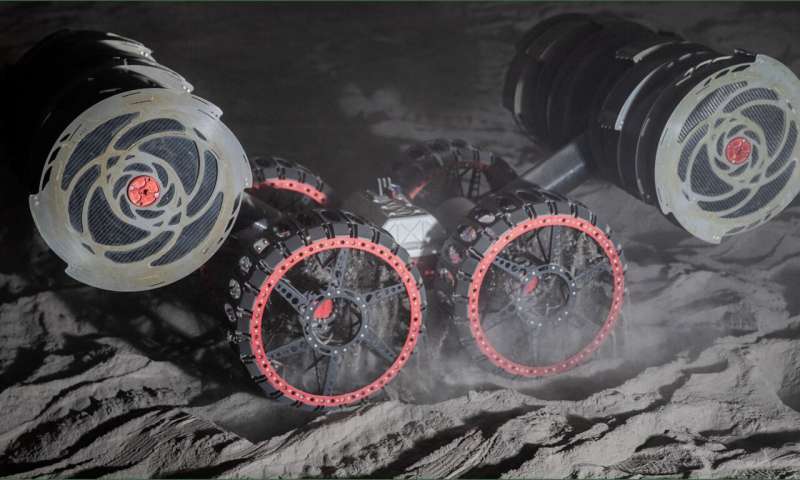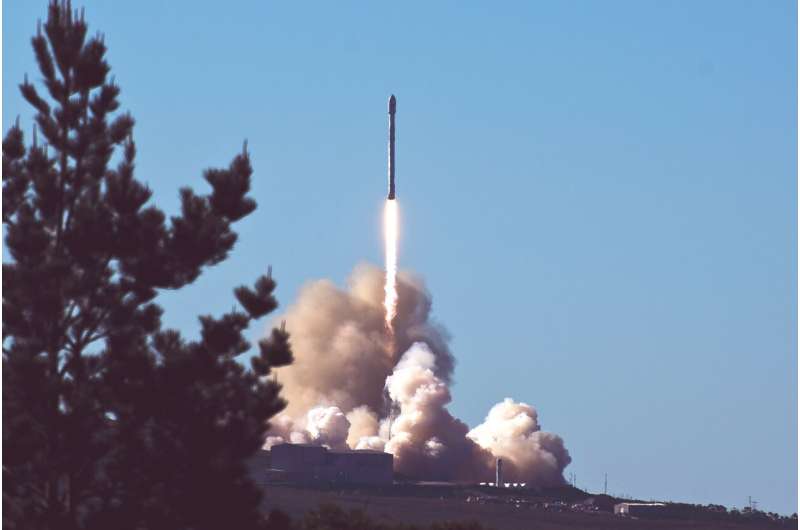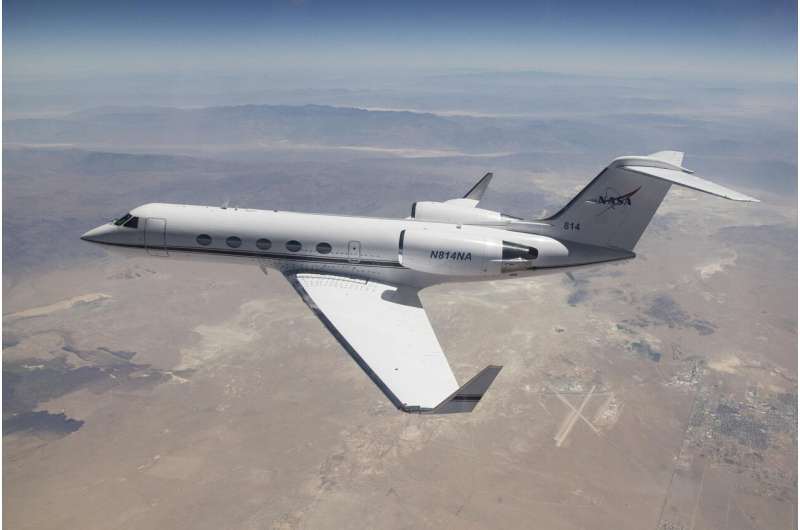
Copernical Team
NASA cuts 2 from next SpaceX flight to make room for astronauts stuck at space station

NASA on Friday cut two astronauts from the next crew to make room on the return trip for the two stuck at the International Space Station.
NASA's Nick Hague and Russian Aleksandr Gorbunov will launch in September aboard a SpaceX rocket for the orbiting laboratory. The duo will return with Suni Williams and Butch Wilmore in February. NASA decided it's too risky for Williams and Wilmore to fly home in their Boeing Starliner capsule, marred by thruster troubles and helium leaks.
What type of excavator is most suitable for asteroids?

Digging in the ground is so commonplace on Earth that we hardly ever think of it as hard. But doing so in space is an entirely different proposition. On some larger worlds, like the moon or Mars, it would be broadly similar to how digging is done on Earth. But their "milligravity" would make the digging experience quite different on the millions of asteroids in our solar system.
Given the potential economic impact of asteroid mining, there have been plenty of suggested methods on how to dig on an asteroid, and a team from the University of Arizona has published the latest in a series of papers about using a customized bucket wheel to do so.
Bucket wheel designs seem to be gaining popularity in space mining more generally lately. NASA's ISRU Pilot Excavator (IPEx) uses a similar design and has been advanced to Technology Readiness Level 5, according to its latest yearly report.
NZ's Space Agency is both regulator and developer of the aerospace industry—that's a point of tension, say researchers

Like the global space industry, which aims to reach a value of US$1.8 trillion by 2035, New Zealand's aerospace sector is growing rapidly.
But as our latest research shows, it is falling short on addressing urgent sustainability issues because of a perception this would incur short-term costs and slow growth.
Many countries are prioritizing the development of national space strategies. Usually, these include plans to increase access to venture capital, grow a specialist workforce and develop flexible regulations and sovereign defense capabilities.
But sustainability leadership in space is crucial, given rising concerns over space debris, and emerging issues such as ozone depletion from rocket launches and the accumulation of alumina and soot particles in Earth's atmosphere as re-entering objects burn up.
The politics of growth
New Zealand's aerospace regulatory system was catalyzed by Rocket Lab U.S.'s commercial decision to launch rockets from a spaceport on the Māhia peninsula.
This was followed by the establishment of New Zealand's Space Agency. This small unit of the Ministry of Business, Innovation and Employment (MBIE) regulates launch payloads and fosters business development by facilitating access to funding for commercial ventures and scientific research.
NASA G-IV plane will carry next-generation science instrument

Cluster’s Salsa satellite primed to reenter and break up
 Video:
00:01:02
Video:
00:01:02
On 8 September 2024, Salsa (Cluster 2), one of four satellites that make up ESA’s Cluster mission, will reenter Earth’s atmosphere over the South Pacific Ocean Uninhabited Area.
Salsa’s reentry marks the end of the historic Cluster mission, over 24 years after the quartet was sent into space to measure Earth’s magnetic environment. Though the remaining three satellites will also stop making scientific observations, discoveries using existing mission data are expected for years to come.
This ‘targeted reentry’ is the first of its kind, and goes well beyond international standards. ESA is committed to ensuring the long-term sustainability of space activities by mitigating the creation of space debris wherever possible
Week in images: 26-30 August 2024

Week in images: 26-30 August 2024
Discover our week through the lens
University of Florida professor to fly Blue Origin New Shepard on mission for NASA

University of Florida horticulture science professor Rob Ferl is going where some men have gone before, including William Shatner and Jeff Bezos, but he's bringing along some experimental plant life for NASA.
Ferl, a researcher within UF's Institute of Food and Agricultural Sciences, is also the director of UF's new Astraeus Space Institute. He is joining five other people on the launch of Blue Origin's suborbital New Shepard rocket today for what will be its eighth human spaceflight. Dubbed NS-26, the capsule is set for liftoff as early as 9:00 a.m. EDT from Blue Origin's West Texas launch facility.
Along for the ride will be a species of plant called Arabidopsis thaliana. Ferl will be looking at how its genes adapt on the way to space.
"Space is a challenging environment, one that we're not evolutionarily designed for," he said during a phone interview from the launch site. "And so the question is, what tools can we bring to bear to understand how much adaptation, how much physiological change has to occur in order to survive and thrive in space.
Sentinel-2C: ready for liftoff
 Video:
00:02:32
Video:
00:02:32
Sentinel-2C is ready for launch! The new satellite will soon join its Copernicus Sentinel-2 family in orbit – where it will continue to provide detailed views of Earth’s land and coastal waters.
The mission is based on a constellation of two identical satellites: Sentinel-2A and Sentinel-2B. The constellation was originally designed to monitor land surfaces – but its scope has since expanded.
It now covers a wide range of applications including deforestation, water quality, monitoring natural disasters, methane emissions and much more.
Sentinel-2C, once in orbit, will replace the Sentinel-2A unit – prolonging the life of the Sentinel-2 mission –
NASA record holder can relate to astronauts stuck in space. He was, too

NASA's record-holding astronaut is urging his two stuck-in-space colleagues to stay positive and "keep up the good work."
Frank Rubio knows firsthand about unexpectedly long spaceflights. His own visit to the International Space Station lasted just over a year, twice as long as planned.
Astrobotic Concludes Peregrine Mission One, Publishes Post-Mission Findings
 Astrobotic's Peregrine Mission One (PM1), launched on January 8, 2024, aboard United Launch Alliance's Vulcan rocket, aimed to make history by landing on the Moon. However, a significant anomaly during the mission's early stages prevented the lander from achieving its primary objective. Despite this setback, the mission provided valuable insights and data that will inform future lunar endeavors.
Astrobotic's Peregrine Mission One (PM1), launched on January 8, 2024, aboard United Launch Alliance's Vulcan rocket, aimed to make history by landing on the Moon. However, a significant anomaly during the mission's early stages prevented the lander from achieving its primary objective. Despite this setback, the mission provided valuable insights and data that will inform future lunar endeavors. 
